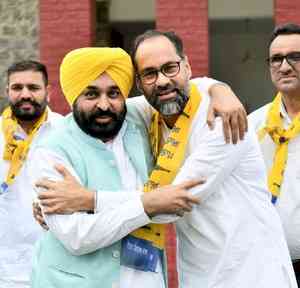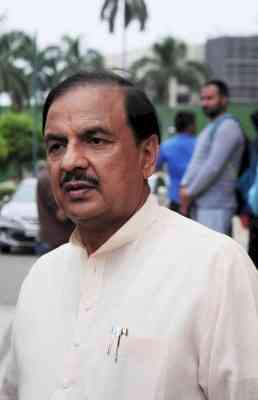Economic survey highlights-4
* Economy is likely to grow 5.4-5.9 percent in 2014-15 overcoming the sub-5 percent growth of the last two years * Balance of Payments (BoP) position improved dramatically in 2013-14, particularly in the last three quarters; sustaining this...

* Economy is likely to grow 5.4-5.9 percent in 2014-15 overcoming the sub-5 percent growth of the last two years
* Balance of Payments (BoP) position improved dramatically in 2013-14, particularly in the last three quarters; sustaining this in the medium term a challenge
* India has second fastest growing services sector with Compound Annual Growth Rate of 9 percent, just below China's 10.9 percent during 2001-2012
* India ranked 12th in terms of services GDP in 2012 among the world's top 15 countries in terms of GDP. While services share in world GDP was 65.9 percent and in employment was only 44 percent in 2012, in India, it was 56.9 percent and 28.1 percent
* Services constitute a 57 percent share in GDP at factor cost (at current prices) in 2013-14, an increase of 6 percent over 2000-01.
* In 2013-14, FDI inflows to the services sector (top five sectors including construction) declined sharply by 37.6 percent to $6.4 billion compared to an overall growth in FDI inflows at 6.1 percent
* Exports: India's increase in share in world services exports from 0.6 percent in 1990 to 3.3 percent in 2013 was faster than in merchandise exports. Exports of software services accounted for 46 percent of India's total services exports, decelerated to 5.4 per cent in 2013-14; travel, accounting for a nearly 12 percent share, witnessed negative growth of 0.4 per cent.
* Passage of PFRDA Act, shift of commodity futures trading into the finance ministry and the presentation of the FSLRC report were the three major milestones of 2013-14
* FSLRC, in its report, has given wide-ranging recommendations, broadly in the nature of governance enhancing principles for enhanced consumer protection, greater transparency in the functioning of financial sector regulators in terms of their reporting system, greater clarity on their interface with the regulated entities and greater transparency in the regulation making process by means of mandatory public consultations and incorporation of cost benefit analysis, among others
* Gross NPAs of banks registered a sharp increase. Overall NPAs of the banking sector increased from 2.36 percent of credit advanced in March 2011 to 4.40 percent of credit advanced in December 2013.
* RBI has identified infrastructure, iron and steel, textiles, aviation and mining as stressed sectors
* New Pension System (NPS), now National Pension System, represents a major reform of Indian pension arrangements, and lays the foundation for a sustainable solution to ageing in India by shifting to an individual account, defined-contribution system.
* Till May 7, 2014 67.11 lakh members have been enrolled under the NPS with a corpus of Rs. 51,147 crore
* Swavalamban Scheme for workers in the unorganized sector launched in 2010, extended to five years for the beneficiaries enrolled in 2010-11, 2011-12, and 2012-13; benefits of co-contribution would be available till 2016-17.
* Long-term external debt accounts for 78.2 percent of total external debt at end-December 2013 against 76.1 percent at end-March 2013. Long-term debt at end-December 2013 increased by $25.1 billion (8.1 percent) over the level at end-March 2013 while short-term debt declined by $4 billion (4.1 percent), reflecting a fall in imports
* Wholesale Price Index inflation fell to three-year low of 5.98 percent during 2013-14
* Consumer Price Inflation also showed signs of moderation
* Both Wholesale and Consumer Price Inflation expected to go downward
* Fiscal consolidations remains imperative for the economy
* Fiscal consolidation recommended through higher tax-GDP ratio then merely reducing the expenditure-GDP ratio
* Proactive policy action helped government remain in fiscal consolidation mode in 2013-14
* Fiscal deficit for 2013-14 contained at 4.5 percent of GDP
* Total outstanding liabilities of the central and state governments decline as a proportion of GDP
* India's balance-of-payments position improved dramatically in 2013-14 with the current account deficit (CAD) at $32.4 billion (1.7 percent of GDP) as against $88.2 billion (4.7 percent of GDP) in 2012-13
* The annual average exchange rate of the rupee went up from 47.92 per dollar in 2011-12 to Rs.54.41 per dollar in 2012-13 and further to Rs.60.50 per dollar in 2013-14
* India's foreign exchange reserves increased from $292 billion at end March 2013 to $304.2 billion at end March, 2014

 cityairnews
cityairnews 













